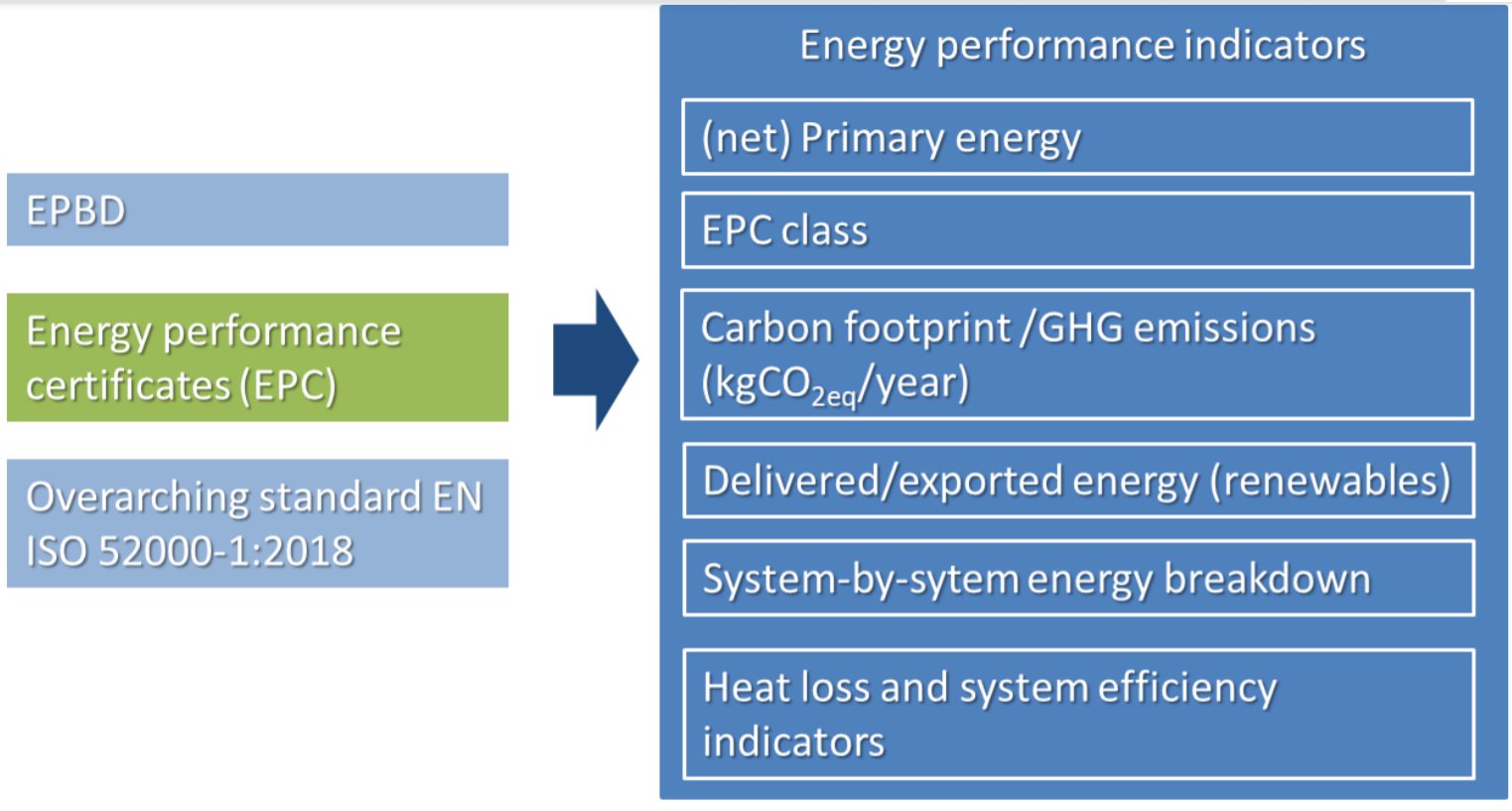

Indicators
In the current implementation of EPCs, the assessment focus is purely on the energy consumption data of buildings. Furthermore, for existing buildings, they are often made at a low cost and not in alignment with actual energy consumption of the building. For new buildings and major renovations, the EPCs are generally calculated during the design process of the building when all design documentation is available but is utilized only for the aspects minimally required by the EPBD.
Within the EPC framework, the problem is not the availability of performance indicators, but with the assessment effort required (cost and level of qualification necessary) for these indicators. There are plenty of privately developed voluntary certification schemes readily available both locally and internationally, such as LEED, BREEAM and Green Star, but these are typically targeted at interested investors and developers and are not suitable for bulk EPCs. Only the data that is easily available can be justifiably introduced to EPCs either as direct complementary input or as a performance indicator.
U-CERT proposes two different development paths:
- Existing buildings
- New buildings and major renovations
Two categories of complementary indicators to energy are proposed
IEQ indicators
- IEQ indicators cover parameters such as room temperature, air flow, air velocities, CO2 levels and HVAC system noise.
- In new buildings and major renovations, it would require only some small additional access to design documentation and increased competence of the assessor. For example, additional design information about air distribution and air quality is needed, as draught complaints are one of the most common complaints about the indoor environment in modern non-residential buildings. However, the design documentation of the building must anyhow state the design criteria of the indoor environment parameters. If all the calculation and simulation reports that prove the compliance to the design criteria are presented with the design documentation, then the assessment effort of IEQ for certification is reasonably justified.
- For existing buildings, generally only limited information is available in the design documentation, or in some cases the design documentation might not be complete or not available. The IEQ assessment then would require on-site measurements, inspections and monitoring, this procedure is described in detail
Power indicators
- Currently, there is no power or flexibility data of the building systems presented in the EPCs.
- Proposed power indicators would describe peak and typical loads of the building on electricity, district heating and cooling grids and networks.
- This interacts with the Smart Readiness Indicator framework, where grid flexibility, power shifting and demand-response are important assessed parameters.
- Power indicators can be implemented for existing buildings as well, under the assumption that hourly metering data is available or retrofitted to the existing system